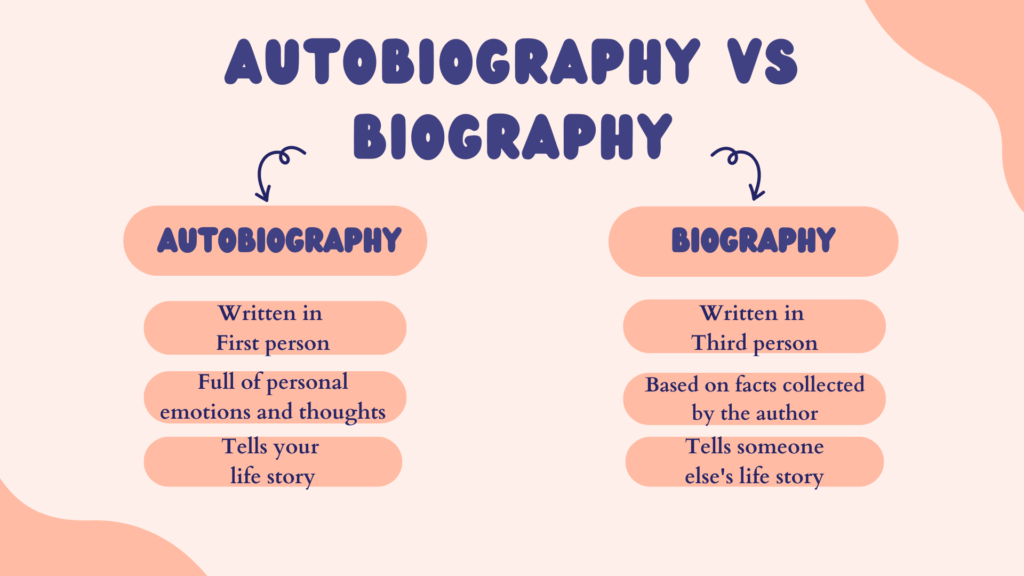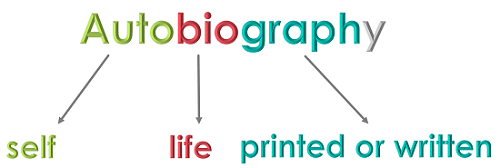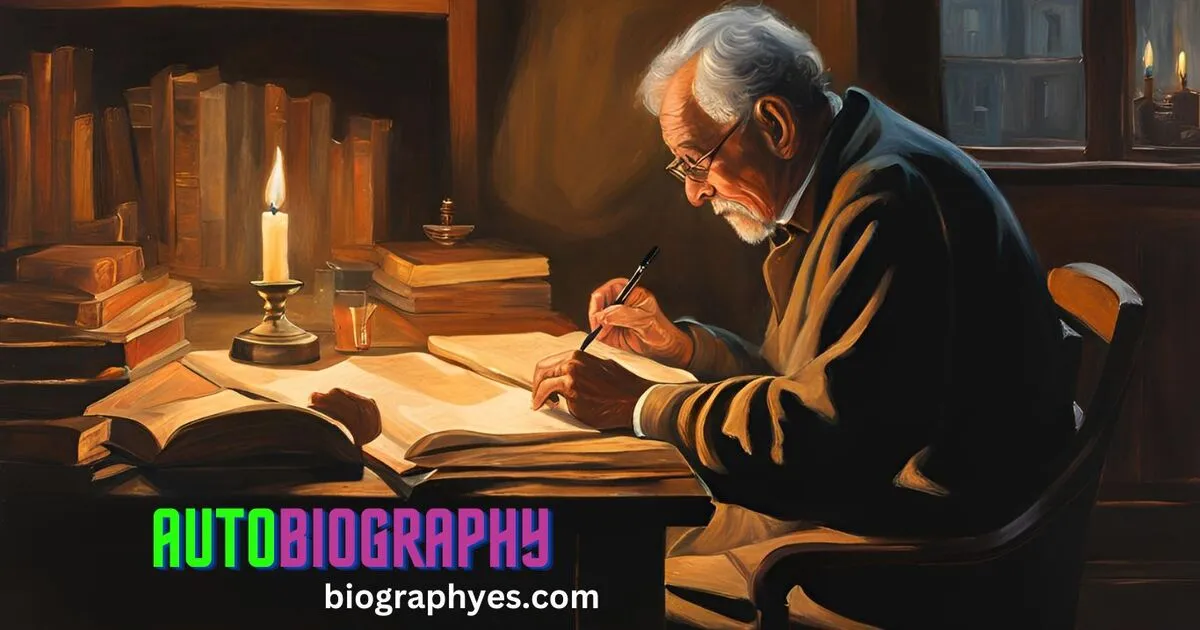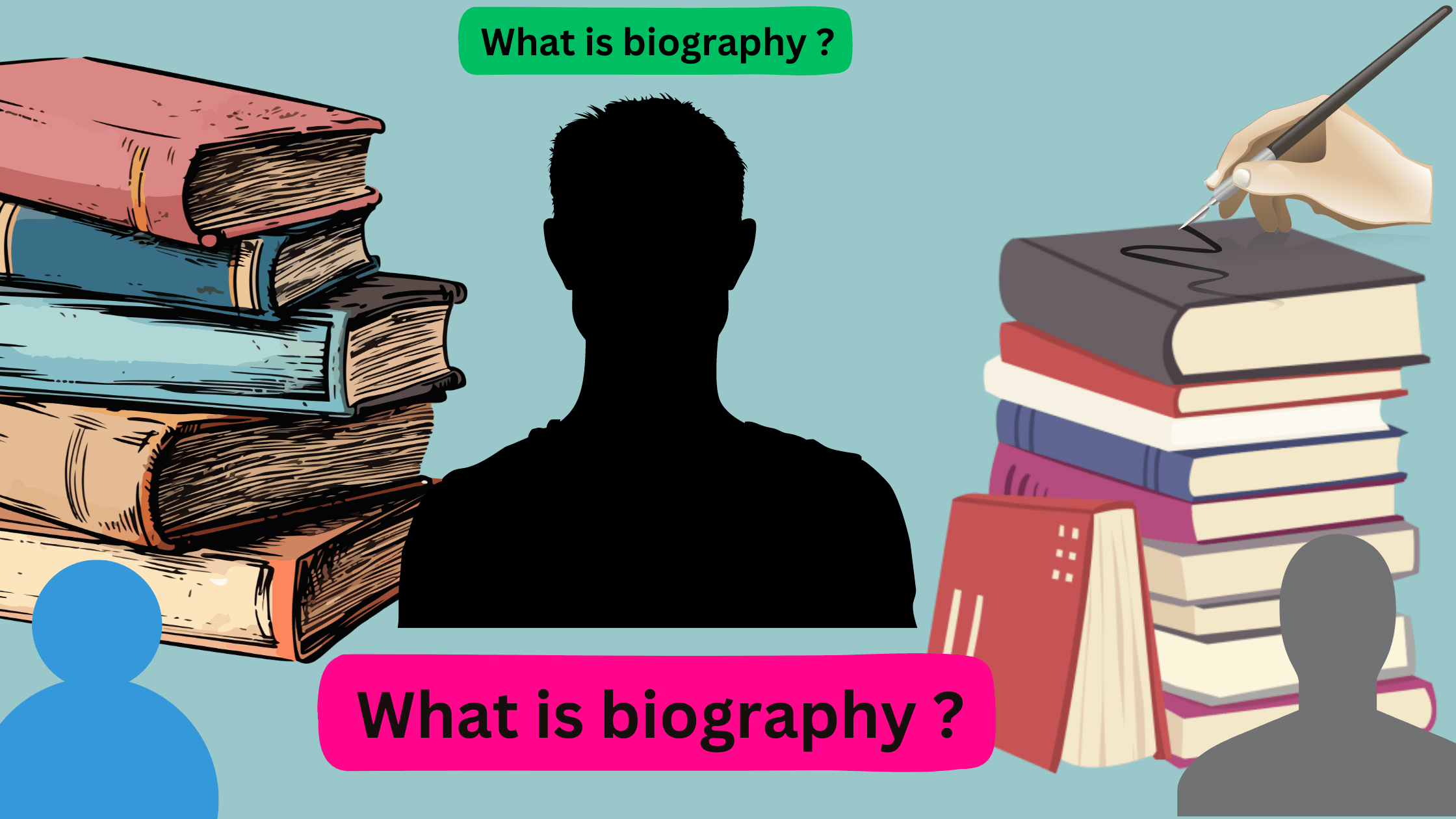“An autobiography is a window into one’s soul,” said Maya Angelou. These personal narratives offer an intimate glimpse into the life experiences, thoughts, and emotions of the author. They enable readers to journey through the author’s life from birth to present.
Historically, autobiographies have provided invaluable insights into various cultures and societies. Benjamin Franklin’s work from 1791 remains a timeless piece in English literature. Interestingly, 2020 saw a surge in autobiographical publications, with many seeking to document and share their unique pandemic experiences, illustrating the genre’s enduring relevance.
An autobiography is a self-written account of a person’s life, providing insights into their experiences, achievements, and thoughts. It offers an intimate look at the author’s journey from their own perspective, making it a unique and authentic narrative within literature. This genre bridges personal storytelling with historical context, enriching readers’ understanding.


What is Autobiography?
An autobiography is a person’s life story written by that person. It captures various aspects of their life, including experiences, struggles, and achievements. Unlike biographies, which are written by someone else, autobiographies provide a first-hand account of the author’s life. This makes them a unique and personal narrative. Autobiographies often reveal deep insights into the author’s thoughts and feelings.
Many people write autobiographies to share their personal journey with others. These accounts can be inspirational and educational. They give readers a chance to learn from the author’s experiences. Additionally, autobiographies can showcase different historical and cultural contexts. This enriches the reader’s understanding of the world.
Famous autobiographies have left lasting impacts on literature and society. For instance, “The Diary of a Young Girl” by Anne Frank offers a poignant look into the life of a Jewish girl during World War II. Similarly, Malala Yousafzai’s “I Am Malala” highlights her fight for girls’ education. These works inspire and educate millions around the world. Autobiographies can also prompt social change by raising awareness about important issues.
Writing an autobiography can be a therapeutic process for the author. It allows them to reflect on their life and make sense of their experiences. Some people write their autobiographies in later life to leave a legacy. Others start writing during impactful moments in their lives. Regardless of timing, an autobiography offers a powerful way to tell one’s story.
Defining Autobiography
An autobiography is a book or article someone writes about their own life. It usually covers their life story, from their earliest memories to their latest experiences. This form of writing allows the author to share their personal perspective on events. It’s a deeply personal type of literature. Unlike other forms, it blends personal history with storytelling.
One key aspect of autobiographies is their authenticity. Since the author writes about their own experiences, there’s an element of honesty. This makes the narrative compelling and engaging. Autobiographies often include photos and documents to support the story. These elements help bring the story to life for the readers.
Many famous people, such as presidents, athletes, and artists, write autobiographies. These works offer a peek into their lives, beyond what the public usually sees. They often share the challenges and triumphs they faced. This can be very inspiring for readers. Autobiographies also serve as historical records, capturing important moments.
Writing an autobiography involves reflecting on personal experiences and emotions. The author organizes their memories into a coherent narrative. This process can be both challenging and rewarding. It helps them understand their journey better. For readers, it offers valuable life lessons and different viewpoints.
Historical Perspective of Autobiographies
Autobiographies have been a part of literature for centuries. One of the earliest examples is “Confessions” by Saint Augustine, written in the 4th century. This work set the stage for future autobiographical writings. It detailed Augustine’s spiritual journey and personal struggles. The impact of this book is still significant today.
The Renaissance period saw a rise in autobiographical works. Artists and scholars began writing about their lives, blending personal anecdotes with historical events. For example, Leonardo da Vinci’s notebooks reveal his thoughts and inventions. This period marked a shift towards personal expression. Autobiographies became a medium for self-reflection and public sharing.
In the 18th and 19th centuries, autobiographies diversified. They ranged from the detailed life stories of political figures to the accounts of everyday people. Benjamin Franklin’s autobiography, published in 1791, remains a classic. It provides insights into his life from childhood to statesmanship. Such works offered readers a firsthand look at different social classes and historical events.
Modern autobiographies continue to evolve, reflecting current societal trends. With the rise of digital media, many people now share their life stories online. Blogs, social media, and other platforms have democratized autobiographical writing. Despite the format change, the essence of sharing personal experiences remains. This evolution keeps the genre relevant and dynamic.
Role of Autobiographies in Literature
Autobiographies play a crucial role in enriching literature. They offer a direct glimpse into the lives and minds of their authors. This personal touch adds depth and authenticity to literary works. By sharing personal experiences, autobiographies create a unique connection between the writer and the reader. This makes them an invaluable part of literature.
Through autobiographies, readers gain insight into different historical periods and cultural backgrounds. These works serve as primary sources for understanding various eras and societies. For example, Nelson Mandela’s “Long Walk to Freedom” provides a detailed account of his fight against apartheid. Similarly, Anne Frank’s diary offers a stark look into life during the Holocaust. Such works offer invaluable lessons in history and humanity.
Autobiographies often inspire other forms of literature and art. Many novels, films, and plays draw inspiration from these personal stories. For instance, the movie “Twelve Years a Slave” is based on the autobiography of Solomon Northup. This cross-media influence highlights the enduring power of autobiographical narratives. They transcend genres and captivate audiences in multiple forms.
They also serve as a means for marginalized voices to be heard. Autobiographies provide a platform for individuals to share their unique experiences and perspectives. This can drive social change and promote empathy. Works by authors like Maya Angelou and Malcolm X have raised awareness about racial and social issues. These autobiographies contribute to a more inclusive and diverse literary landscape.
The educational value of autobiographies cannot be overstated. They are used in classrooms to teach various subjects, from history to literature. Students learn not just about events, but also about the human experiences behind them. This makes education more relatable and engaging. Autobiographies enrich the curriculum by adding a personal dimension to academic subjects.
Finally, the emotional impact of autobiographies sets them apart. They often touch the reader on a deeply personal level. Through the author’s detailed recounting of their life’s events, readers find emotions and experiences they can relate to. This emotional resonance makes autobiographies a moving and powerful literary form. It emphasizes the shared human experience.
Famous Autobiographies and their Impact
Famous autobiographies often leave a lasting impact on readers and society. “The Diary of a Young Girl” by Anne Frank is one such example. Her account of hiding during World War II offers a deeply personal perspective on the horrors of the Holocaust. The book has been translated into numerous languages and continues to educate and move readers worldwide. Its emotional and historical significance makes it a timeless classic.
Another noteworthy autobiography is “Long Walk to Freedom” by Nelson Mandela. This book narrates Mandela’s journey from a rural village to becoming the first Black president of South Africa. His struggles and triumphs against apartheid offer profound lessons in resilience and justice. Mandela’s story has inspired generations to fight for their rights. It serves as a beacon of hope and courage.
Similarly, “I Know Why the Caged Bird Sings” by Maya Angelou has had a significant cultural impact. This autobiography discusses Angelou’s early life, including the challenges she faced growing up as an African American girl in the South. Her powerful narrative sheds light on issues of race and identity. The book has influenced many in the literary world and beyond. It has earned a place in educational curricula due to its profound lessons and emotional depth.
Malala Yousafzai’s “I Am Malala” offers an inspiring account of her fight for girls’ education in Pakistan. After surviving a Taliban assassination attempt, Malala’s advocacy gained global attention. Her story has spurred international movements for educational rights. It highlights the power of youth activism and the importance of education. Malala’s autobiography continues to inspire young people to stand up for their beliefs.
Autobiographies by famous personalities often shape public opinion and drive social change. “The Autobiography of Malcolm X” is a poignant example. Co-written with Alex Haley, the book explores Malcolm X’s life and his evolving views on race and religion. His story has influenced civil rights discussions in the United States. It remains a vital text for understanding social justice and activism.
These autobiographies do more than tell personal stories; they become tools for education and change. They resonate with readers from various backgrounds, offering insights and inspiration. As primary sources, they provide firsthand accounts that enrich our understanding of history and humanity. Their impact extends beyond the page, influencing culture and society in lasting ways.
The Modern Autobiography: Evolution and Trends
The modern autobiography has evolved significantly over the years. With the rise of digital media, many people now write and share their life stories online. Platforms such as blogs, social media, and personal websites have democratized this form of writing. Now, anyone with internet access can publish their autobiography. This shift has made autobiographical storytelling more accessible to a global audience.
In recent years, there’s been a trend towards celebrity autobiographies. Famous personalities from various fields, such as sports, entertainment, and politics, are sharing their life stories. These autobiographies often become bestsellers and reach wide audiences. Fans eagerly consume the personal insights and behind-the-scenes stories. This trend highlights society’s fascination with celebrity culture.
Another trend is the rise of autobiographies focusing on mental health and personal struggle. Authors share their experiences with depression, anxiety, and other challenges. These narratives aim to break stigmas and offer support to others facing similar issues. The growing popularity of these stories shows a societal shift toward greater openness about mental health. They encourage readers to seek help and foster a sense of community.
Graphic autobiographies are another emerging trend. These works combine visual art and narrative storytelling. Authors like Alison Bechdel have popularized this format with works like “Fun Home.” This blending of images and text creates a unique reading experience. Graphic autobiographies often attract diverse readerships, including young adults and visual learners.
The use of multimedia in autobiographies is also gaining traction. Some authors incorporate videos, podcasts, and interactive elements into their narratives. This creates a more engaging and immersive experience for readers. For instance, online platforms allow readers to interact with the text, watch related videos, or listen to audio clips. These multimedia elements add depth and context to the stories.
Modern autobiographies reflect diverse voices and experiences. They cover topics ranging from identity and culture to social justice and environmental issues. This diversity enriches the literary landscape and provides readers with a broad range of perspectives. The evolving trends in autobiographical writing demonstrate its adaptability and enduring relevance. They ensure that the genre continues to resonate with contemporary audiences.


Frequently Asked Questions
Autobiographies offer profound insights into the lives and minds of their authors. This section answers some common questions about the fascinating world of autobiographies.
1. How does an autobiography differ from a biography?
An autobiography is written by the person themselves, providing a firsthand account of their life. In contrast, a biography is written by someone else and offers an external perspective on that person’s life and achievements. This difference makes autobiographies more personal and intimate.
Autobiographies focus on the author’s own experiences and feelings. Biographies, on the other hand, might include opinions from other people who knew or studied the subject. Both genres offer valuable insights but from different angles.
2. Why do people write autobiographies?
People write autobiographies to share their life stories, reflect on personal experiences, and leave a legacy for future generations. It’s a way for authors to document their journeys, achievements, struggles, and moments that shaped them as individuals.
Writing an autobiography can also be therapeutic, helping authors understand themselves better. Additionally, it provides readers with inspiration and lessons learned from real-life experiences.
3. What are some famous autobiographies?
Some well-known autobiographies include “The Diary of a Young Girl” by Anne Frank, “Long Walk to Freedom” by Nelson Mandela, and “I Know Why the Caged Bird Sings” by Maya Angelou. These books have had significant cultural impacts and continue to inspire millions around the world.
Another notable example is Malala Yousafzai’s “I Am Malala,” which tells her story of advocating for girls’ education despite facing extreme adversity. These works provide unique perspectives and powerful messages.
4. Can anyone write an autobiography?
Yes, anyone can write an autobiography regardless of fame or public recognition. The key is having a compelling story to tell with genuine emotions and experiences that others can relate to or learn from.
The process involves reflecting on your life events and organizing them into a coherent narrative. Whether you are a public figure or not, if your story holds value or interest for readers, your autobiography can find its audience.
5. What elements make a great autobiography?
A great autobiography typically includes honesty, engaging storytelling, emotional depth, and relatability. Authenticity plays a big role; readers appreciate when authors are truthful about their lives—the good parts as well as the bad times.
An effective narrative structure with clear progression helps maintain reader interest while detailed descriptions bring events to life vividly in their minds.A strong voice that conveys personality makes it memorable too!
Conclusion
Autobiographies offer a deep and personal insight into the lives of their authors. They serve as a bridge between the past and the present, narrating stories that inspire and educate. These firsthand accounts are invaluable resources for understanding history and human experiences. Each narrative adds a unique voice to the literary world.
From the earliest autobiographies to modern digital stories, this genre continues to evolve. Its enduring relevance speaks to the universal need for self-expression and connection. As people share their lives, readers find common ground and diverse perspectives. Autobiographies remain essential to both literature and personal understanding.


